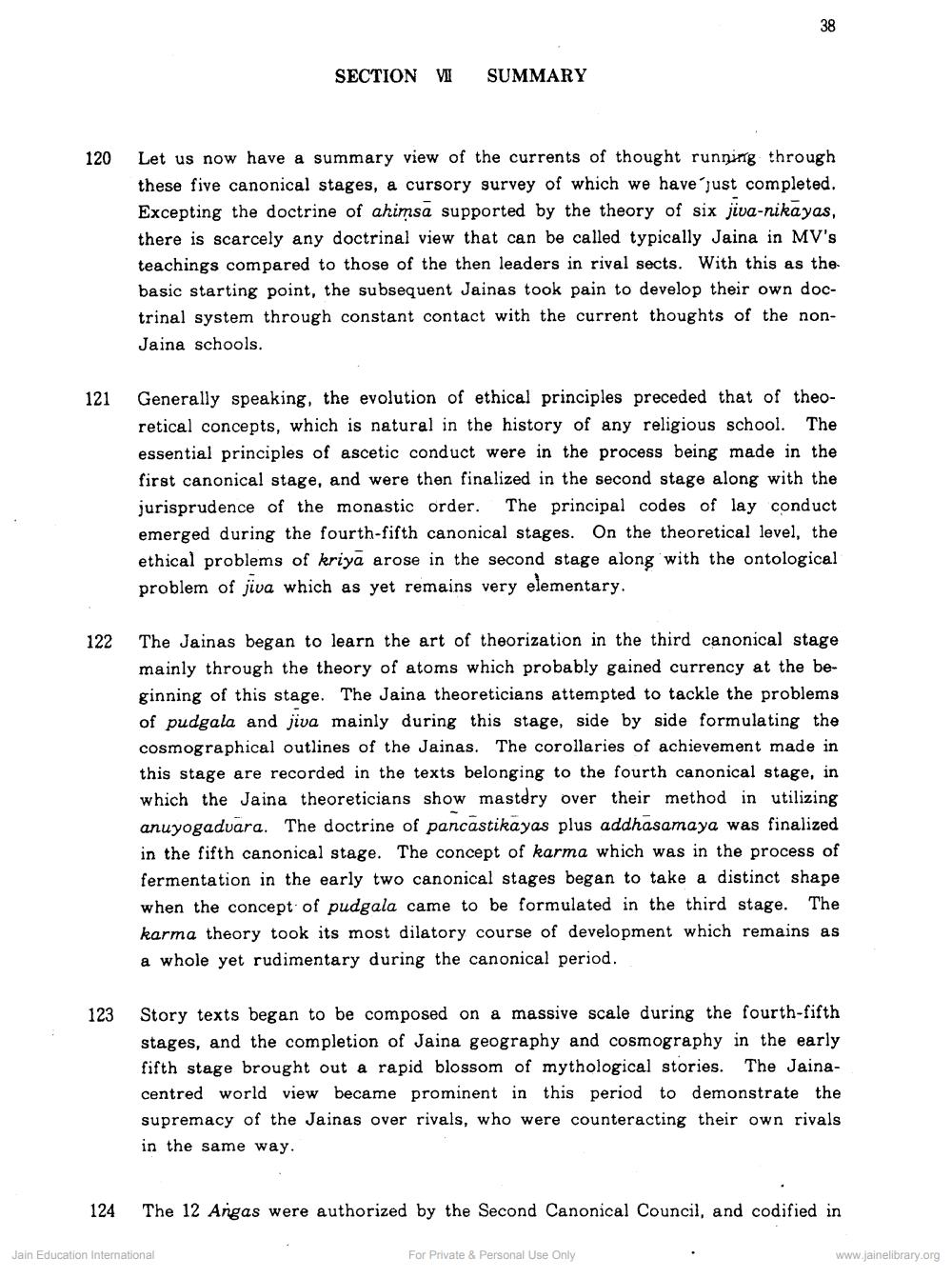________________
120
121
122
123
124
SECTION VI SUMMARY
Let us now have a summary view of the currents of thought running through these five canonical stages, a cursory survey of which we have just completed. Excepting the doctrine of ahimsa supported by the theory of six jiva-nikayas, there is scarcely any doctrinal view that can be called typically Jaina in MV's teachings compared to those of the then leaders in rival sects. With this as the basic starting point, the subsequent Jainas took pain to develop their own doctrinal system through constant contact with the current thoughts of the nonJaina schools.
38
Generally speaking, the evolution of ethical principles preceded that of theoretical concepts, which is natural in the history of any religious school. The essential principles of ascetic conduct were in the process being made in the first canonical stage, and were then finalized in the second stage along with the jurisprudence of the monastic order. The principal codes of lay conduct emerged during the fourth-fifth canonical stages. On the theoretical level, the ethical problems of kriya arose in the second stage along with the ontological problem of jiua which as yet remains very elementary.
The Jainas began to learn the art of theorization in the third canonical stage mainly through the theory of atoms which probably gained currency at the beginning of this stage. The Jaina theoreticians attempted to tackle the problems of pudgala and jiva mainly during this stage, side by side formulating the cosmographical outlines of the Jainas. The corollaries of achievement made in this stage are recorded in the texts belonging to the fourth canonical stage, in which the Jaina theoreticians show mastery over their method in utilizing anuyogadvara. The doctrine of pancastikayas plus addhasamaya was finalized in the fifth canonical stage. The concept of karma which was in the process of fermentation in the early two canonical stages began to take a distinct shape when the concept of pudgala came to be formulated in the third stage. The karma theory took its most dilatory course of development which remains as a whole yet rudimentary during the canonical period.
Story texts began to be composed on a massive scale during the fourth-fifth stages, and the completion of Jaina geography and cosmography in the early fifth stage brought out a rapid blossom of mythological stories. The Jainacentred world view became prominent in this period to demonstrate the supremacy of the Jainas over rivals, who were counteracting their own rivals in the same way.
Jain Education International
The 12 Angas were authorized by the Second Canonical Council, and codified in
For Private & Personal Use Only
www.jainelibrary.org




